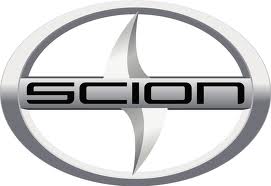xD L4-1.8L (2ZR-FE) (2008)
/Page-1402002.png)
^
Park vehicles from right to left at least three feet apart. Leave enough space front and rear to easily walk between rows.
^
HVAC vent controls should be set to "Recirc" to minimize dust and odor intrusion.
^
Make sure the plastic door edge protectors are in place and fold in the side view mirror (if applicable).
^
Anti-rust covers or anti-rust film should remain on vehicle during storage.
1. Anti-Rust Covers (behind wheel) should be removed at PDS.
2. Anti-Rust Film (applied to wheel) should be removed just prior to customer delivery.
^
Wash vehicles frequently.
Battery
^
Turn off all electrical accessories, make sure windows and sunroof are closed and check that the transmission is in "park" (first or reverse for manual
transmission vehicles). Do not apply the parking brake.
^
Test batteries monthly (more often in high heat or cold areas), using the Digital Battery System
Analyzer (P/N 00002-V8150-KIT). Refer to TSB PG001-06, "Battery Maintenance for In Stock Vehicles and Pre-Delivery" for complete battery
maintenance procedures.
^
To reduce battery drain during long-term storage, remove the battery ground (-) cable of each vehicle and reinstall just before delivery to the
customer. Locate the current PDS TSB on TIS for complete details.
Tire Inflation Pressure
If the vehicle is parked for long periods without being moved, a flat spot may develop on each tire surface in contact with the ground, even if the tires are
inflated to specification. Tire inflation pressure should be checked once a month.
Tire inflation pressure for storage only: 45 psi.
Parts Rust
If the vehicles in your storage area are exposed to a sea breeze and/or a significant precipitation, corrosion with rust in some parts may occur.
If rust is found, remove it, and treat it by applying rust inhibitor to prevent recurrence.
Engine Starting and Vehicle Movement
If the vehicle is stored over an extended period of time, starting and running the engine periodically will ensure smooth running operation.
1. Start and operate the engine at an engine speed under 1,500 RPM for 15 minutes or longer. This also eliminates moisture in the exhaust system.
NOTE
Be sure to allow sufficient clearance at the rear of the vehicle to prevent other vehicles stored behind from getting damaged by exhaust gas.
2. Move the vehicle at least 30 feet to lubricate the transmission and differential and prevent tire flat-spot damage.
3. Raise engine speed above 3,000 RPM 10 times to eliminate moisture from the exhaust.
A/C Compressor Lubrication
To minimize the possibility of damage to the A/C compressor while storing a vehicle perform the following recommended maintenance procedures at
least once a month to lubricate the compressor.
1. Turn off A/C and blower switches prior to starting engine.
2. Start and warm up the engine until engine idle drops below 1,000 rpm.
3. Turn on the A/C system (including the rear A/C) using the following settings:
